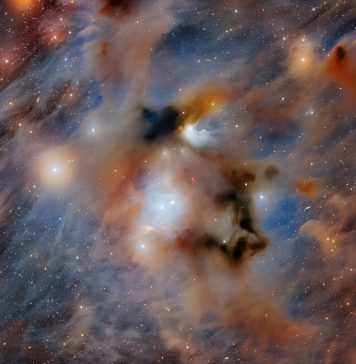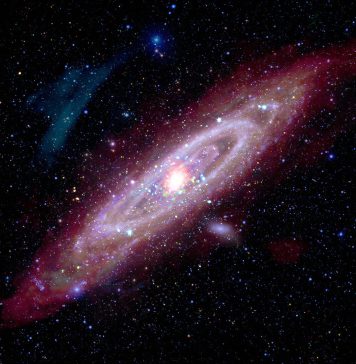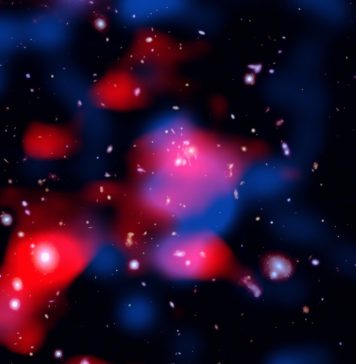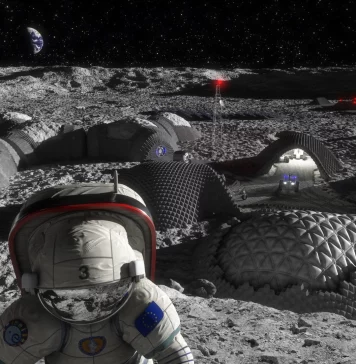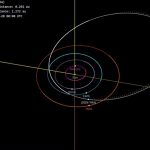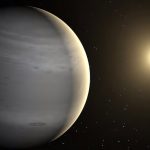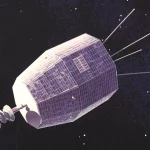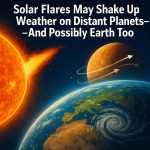Space & Future
If we can’t detect the first stars, maybe we can see their first galaxies
Population III (PopIII) stars represent astronomy's ultimate prize are the first generation of stars born from the pristine hydrogen and helium created in the...
After 20 years, NASA’s Mars orbiter learns a new trick to see deeper underground
Even after nearly two decades in space, NASA’s Mars Reconnaissance Orbiter (MRO) is proving it’s far from outdated.
Engineers have recently taught the spacecraft a...
How do scientists calculate the probability that an asteroid could hit Earth
I was preparing for my early morning class back in January 2025 when I received a notice regarding an asteroid called 2024 YR4.
It said...
Scientists discover giant new planet thanks to global stargazers
to the teamwork of scientists and everyday stargazers from around the world.
The planet, named TOI-4465 b, is a gas giant located about 400 light-years...
A fast radio burst detected last year turned out to be from long-dead NASA...
Fast Radio Bursts (FRBs) have remained a mystery to astronomers even since the first was detected in 2007 (known as the Lorimer Burst).
These quick...
Scientists create Mars building material that grows like a plant
The dream of living on Mars has been around for decades, often featured in science fiction books and movies.
But with successful Mars landings and...
The Milky Way is more clumpy than astronomers thought
Astronomers have found a new way of accurately mapping the outer gas disk of the Milky Way using the positions of young stars.
In the...
Solar flares may shake up weather on distant planets—and possibly Earth too
A new study has found that solar flares—sudden bursts of energy from stars—can trigger short-term weather changes on planets far beyond our solar system.
The...
Mercury up close: How scientists are unlocking the secrets of our strangest planet
Mercury is a mystery.
It’s the smallest planet in our solar system, the closest to the Sun, and one of the most extreme. Its surface...
Rare mineral found in asteroid sample shakes up solar system theories
Scientists have made a surprising discovery inside a tiny grain from the asteroid Ryugu that could change what we thought we knew about how...
How meteorite may have sparked life on Earth
A surprising discovery by Dutch scientists could offer new clues about how life began on Earth.
Researchers from the University of Amsterdam and Utrecht University...
Why rocky planets form early
When a young star forms, a ring of gas and dust called a protoplanetary disk forms around it.
Together, the star and the disk are...
Deep Space
Scientists propose a new theory for the Earth’s formation
Although the Earth has long been studied in detail, some fundamental questions have still to be answered.
One of them concerns the formation of our...
Thousands of planets may be around a supermassive black hole
"I have seen the dark universe yawning,
Where the black planets roll without aim;
Where they roll in their horror unheeding, without knowledge or lustre or...
Scientists find an exoplanet with the potential to form moons
Astronomers at the Center for Astrophysics | Harvard & Smithsonian have helped detect the clear presence of a moon-forming region around an exoplanet —...
Sun-like stars found orbiting hidden companions
Most stars in our universe come in pairs.
While our own Sun is a loner, many stars like our Sun orbit similar stars, while a...
Scientists create a recipe book to search for alien life
Have you ever wondered if there's life on other planets?
Scientists at the University of Wisconsin–Madison are asking the same question, but they've taken an...

